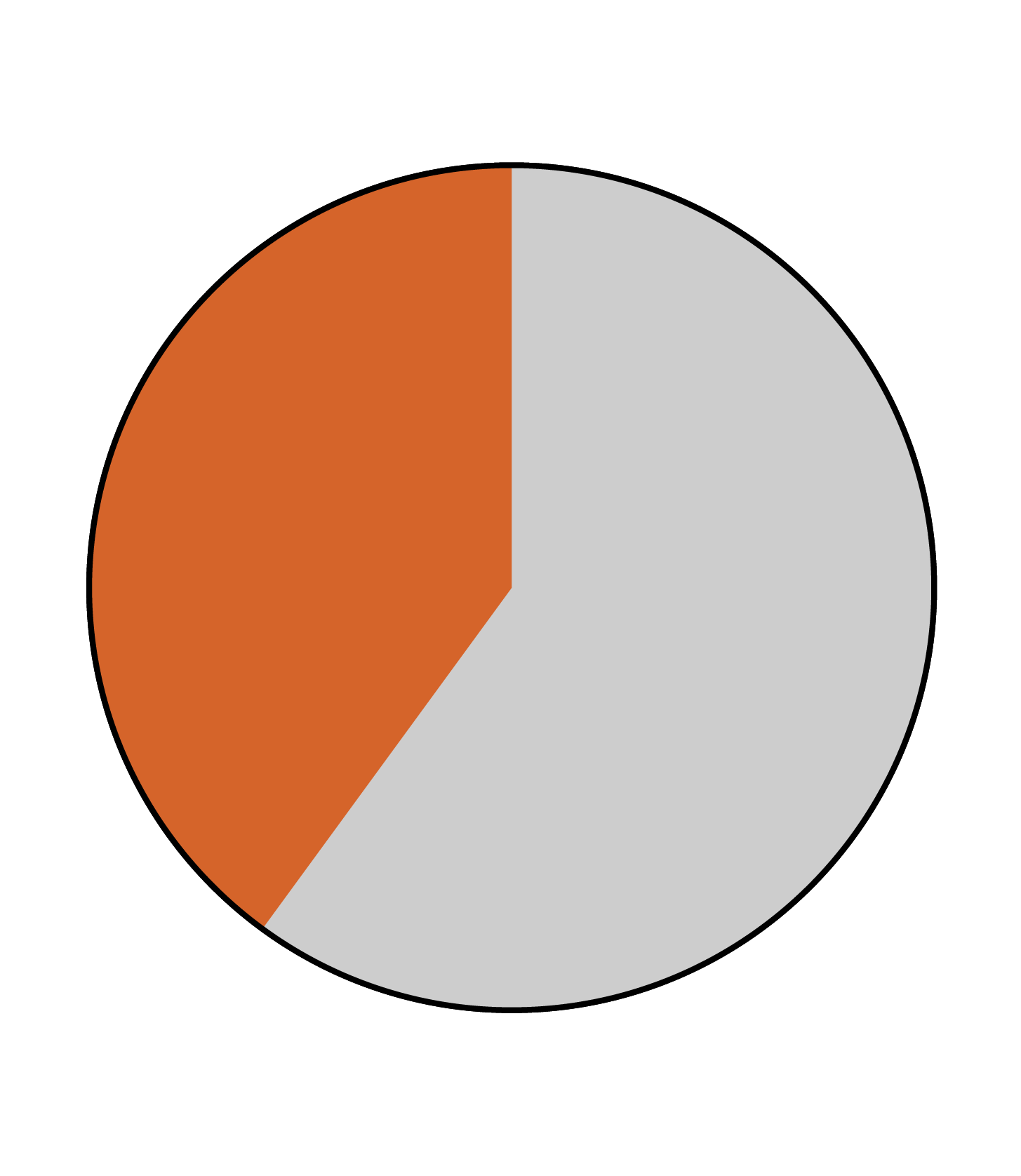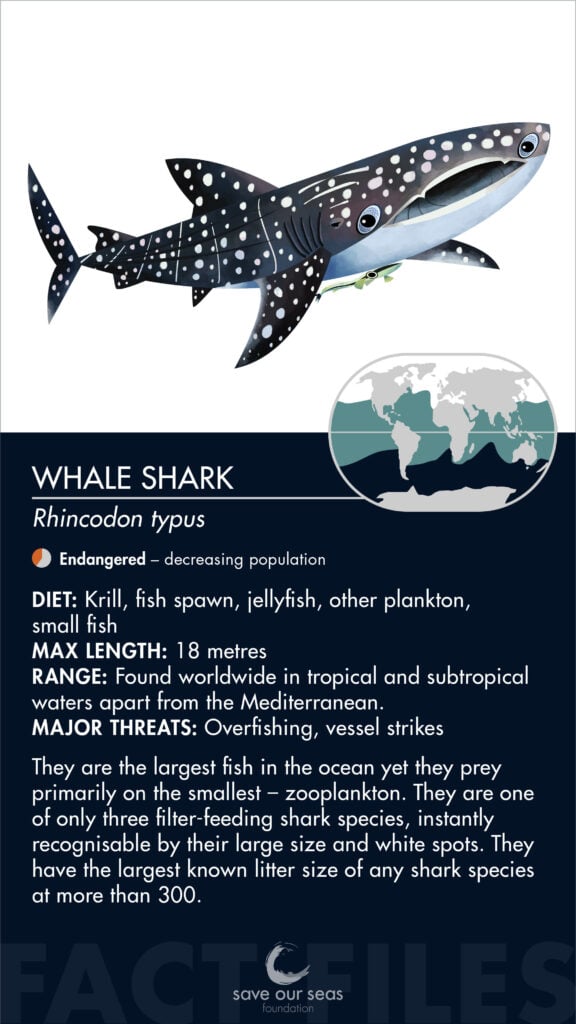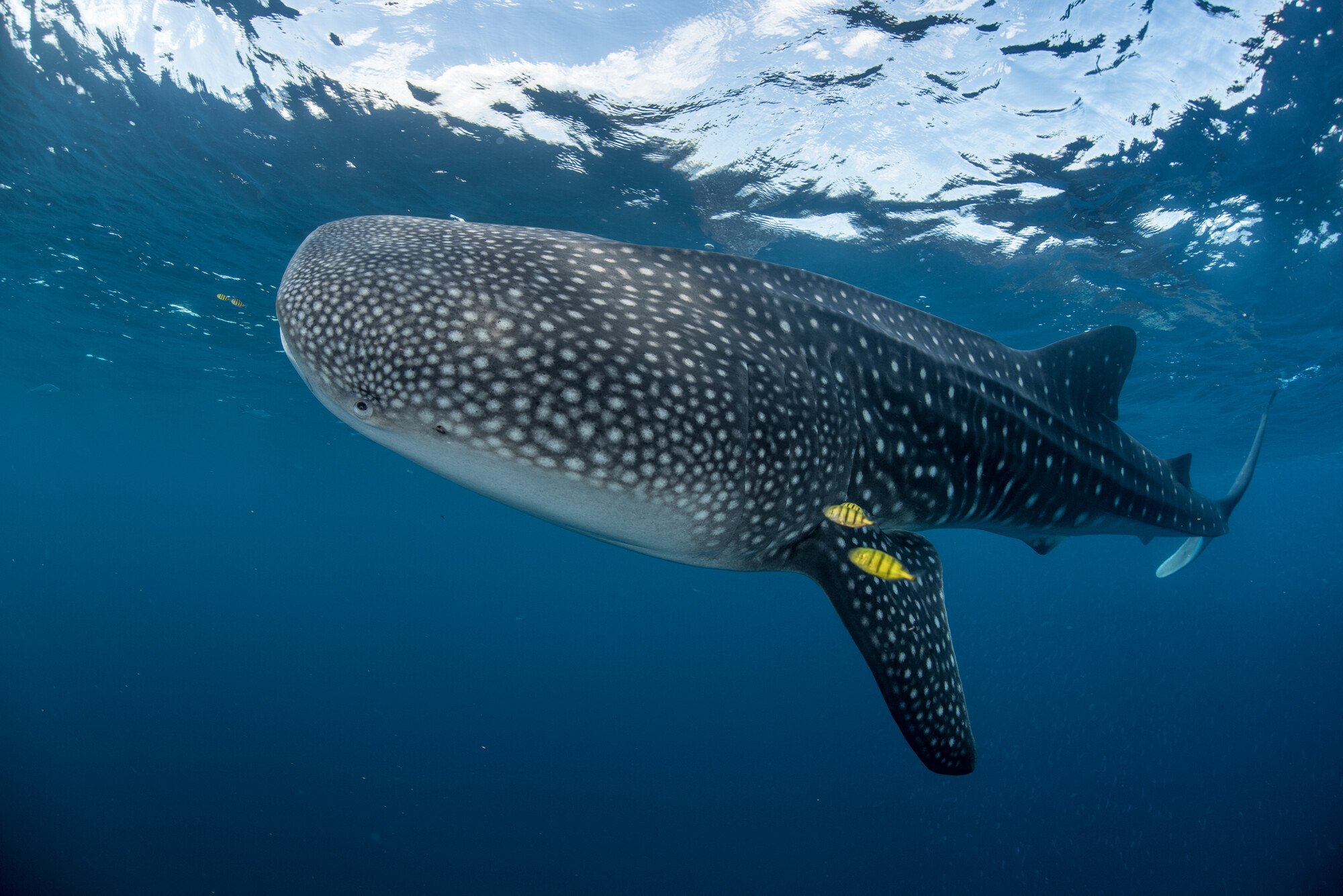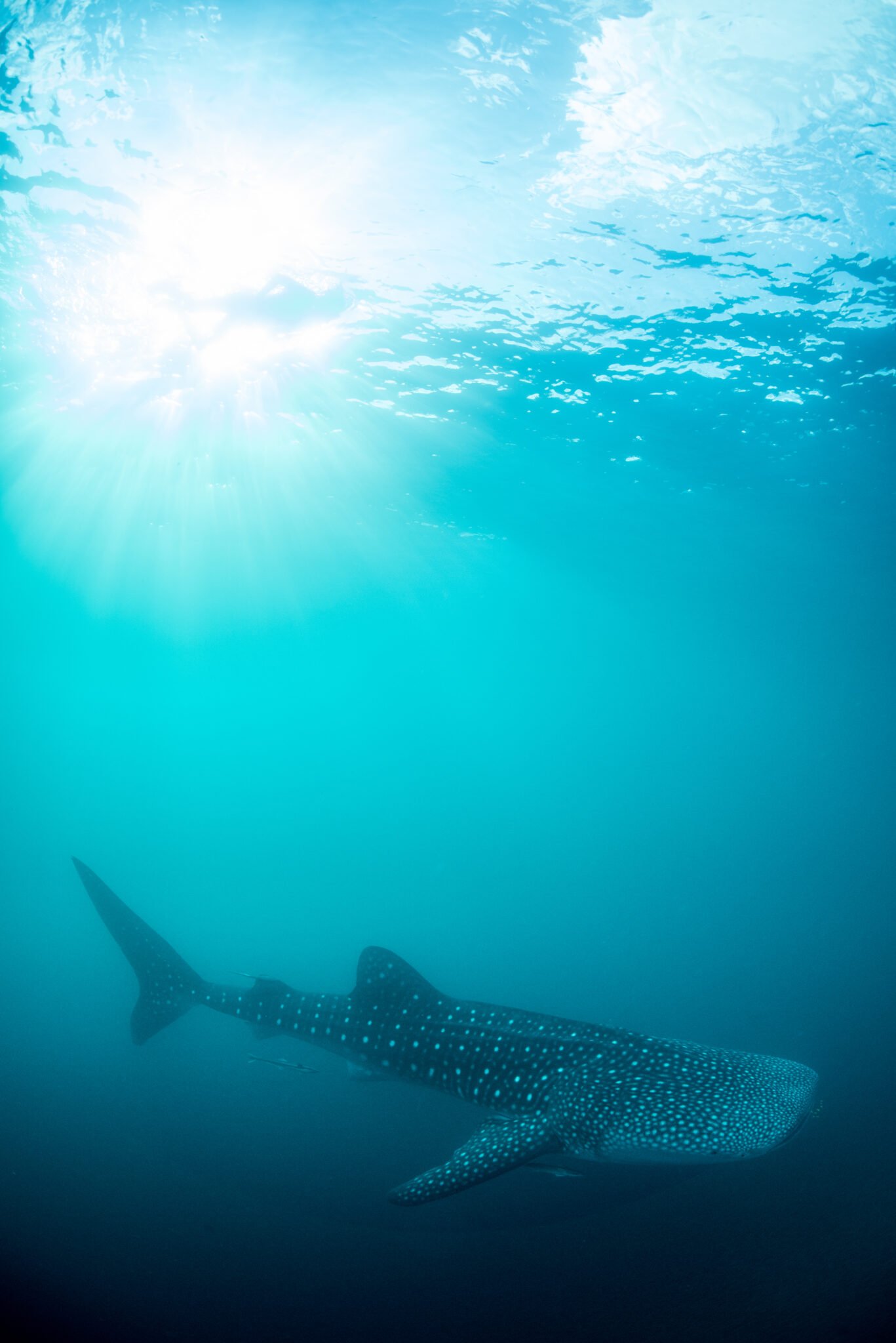Whale Shark
Rhincodon typus



Whale sharks are the largest fish in the ocean yet they prey primarily on the smallest – zooplankton. They are one of only three filter-feeding shark species, instantly recognised by their large size and white spots. They have the largest known litter size of any shark species at more than 300.
Identification
Named after a body size more common in marine mammals, whale sharks are the largest fish in the ocean. This, combined with their whole top side being covered in an intricate spot pattern, makes them one of the most easily identified shark species. They also have a very wide, blunt head, with a large filter-feeding mouth. It is thought that their spot patterns may be a form of camouflage and, since each one is unique, the patterns are useful for identifying individuals.

Special behaviour
Despite being so conspicuous, whale sharks are remarkably elusive and little is known about their behaviour and ecology. They do, however, aggregate to feed in large numbers when plankton is seasonally abundant in certain locations. They perform migrations across ocean basins, and are capable of regularly diving to 1,900 m and possibly more (this record is restricted by tagging technology).
Reproduction
Whale sharks are ovoviviparous, meaning they grow their embryos internally and nourish them from a yolk sack before giving birth to live, independent young. Very little else is known about whale shark reproduction, and much of our knowledge comes from a single pregnant female in Taiwan, which gave birth to the largest litter of any shark species at 304 pups. Curiously, the 304 pups were all at different stages of development. Genetic analysis suggests they were sired by the same male, indicating that whale sharks may be able to store sperm and sequentially fertilise their eggs, essentially creating a conveyor belt of pups. Pupping areas remain largely unknown.
Habitat and geographical range
Whale sharks are found worldwide in tropical and subtropical waters apart from the Mediterranean. They occupy both coastal and oceanic habitats, from the surface to dives of at least 1,900 m.

Diet
Whale sharks are filter feeders, essentially feeding on whatever plankton they can filter from the water with their gill rakers. They can often be seen feeding on fish spawn and have even been recorded feeding on baitfish. While they can ram feed like basking sharks (swimming forward with their mouth open to push water through their gills), they are also capable of suction feeding, where they remain stationary in a productive prey patch and pump plankton-rich water over their gills with their mouth. They are able to filter an impressive 600,000 litres of water per hour.
Threats
The primary threat to whale sharks is overfishing, both by fisheries and as incidental bycatch. Even though their meat is considered to be of low quality, it is still in demand along with their large fins, which are highly valued as trophy and display pieces. They are also at significant risk of vessel strikes, especially in shipping lanes as they regularly feed at the surface and are slow moving. Although whale shark population declines vary regionally, it is estimated that global populations have fallen by more than 50%, and they are considered Endangered by the IUCN.
Relationship with humans
Although exploited opportunistically, whale sharks are primarily sought out for in-water interactions through ecotourism operators. Since reliable aggregation spots have been identified in many locations worldwide, whale shark tourism has boomed, with many countries (e.g. Maldives, Mexico, Australia) reporting millions of dollars in revenue. It is estimated that whale shark tourism may globally be worth more than $42 million annually. They are also listed on Appendix II of CITES, restricting their international trade.
Fun facts
Whale sharks can dive to 1,900 m and possibly more, but tagging technology is currently limited to this depth.
Their spot patterns are unique and can be used like human fingerprints to identify individuals.
They have the largest litter size of any shark species – more than 300 pups in one litter!
They can filter 600,000 litres of water per hour.
References
David A. Ebert. et al, 2021, Sharks of the World: A Complete Guide.
IUCN Red List of Threatened Species, Whale shark: Rhincodon typus
Florida Museum, 2018, Rhincodon typus
National Geographic, Whale Shark
Britannica, Whale Shark







